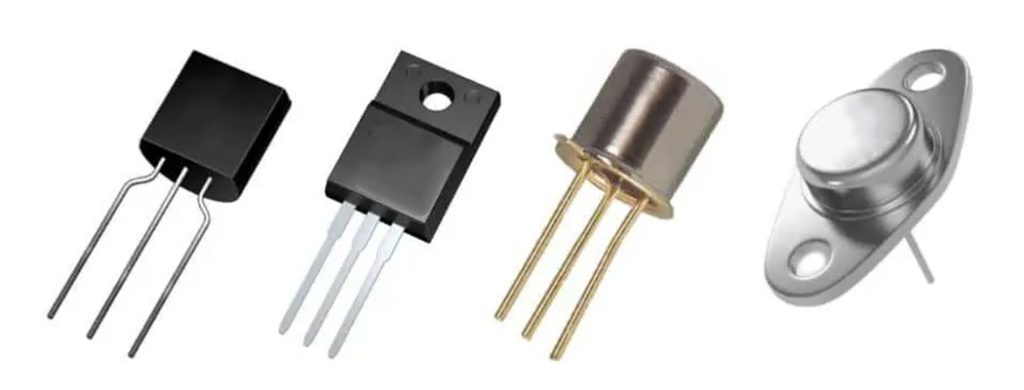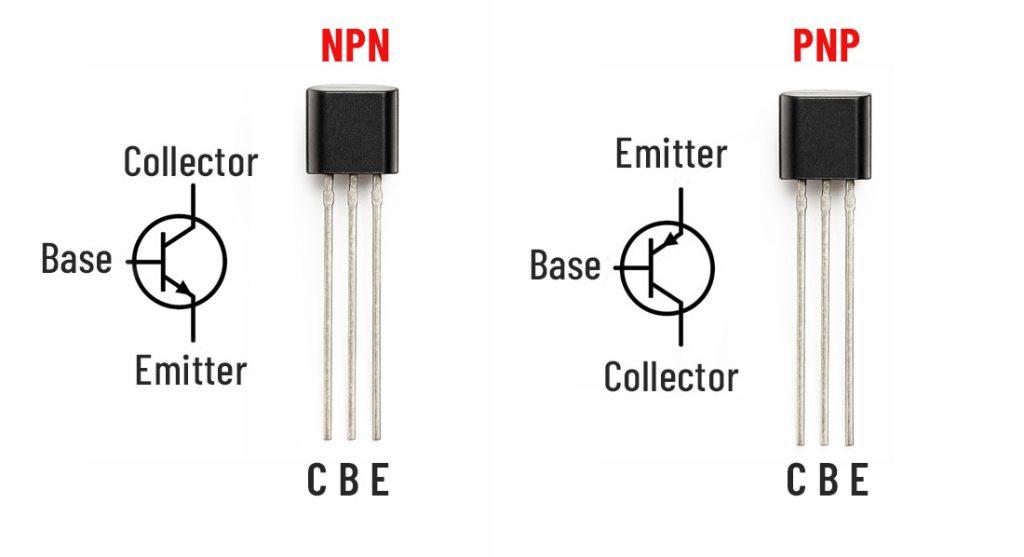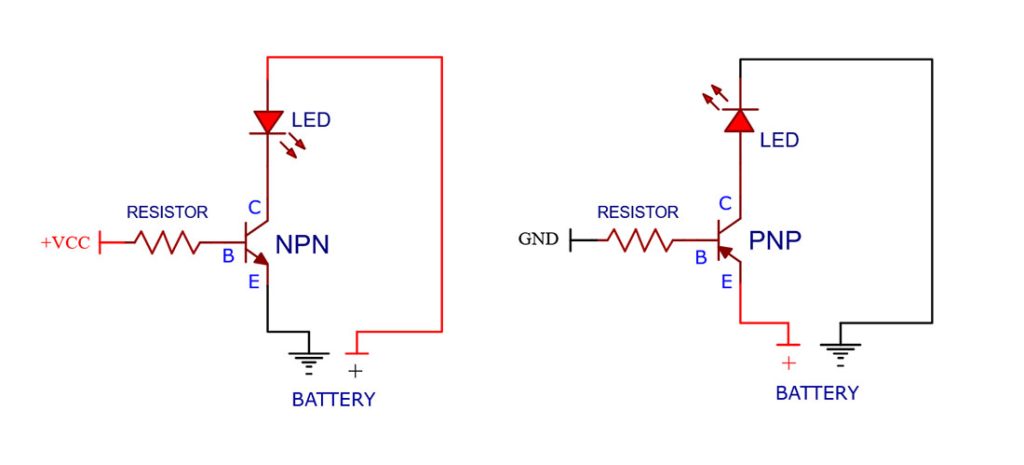What is a Transistor?
A transistor is an electronic component made of semiconductor material that can control a large electric current using a small one. It typically has three pins: base, collector, and emitter.

What is it Used For?
Transistors are mainly used for two purposes:
As a switch: To turn a circuit on or off.
As an amplifier: To boost weak electrical signals.
Differences Between NPN and PNP Transistors
NPN Transistor:
-
Current flows from collector to emitter.
-
To “turn on” the transistor, a positive voltage is applied to the base.
-
More commonly used in circuits.
PNP Transistor:
-
Current flows from emitter to collector.
-
To “turn on” the transistor, a negative (or lower) voltage is applied to the base.
-
The logic is the opposite of the NPN type.

As shown in the illustration, in an NPN transistor, the LED lights up when the base receives a positive voltage. In a PNP transistor, the LED lights up when the base is pulled low. This allows precise control of when the LED turns on.

NPN or PNP? What are the selection criteria?
1. Position of Power Source and Current Flow Direction
If the load (e.g., LED or motor) is placed after the transistor (toward ground), an NPN transistor is usually preferred.
If the load is placed before the transistor (toward the positive supply), a PNP transistor is more suitable.
This is important when using the transistor as a switch.
2. Control Signal Voltage Level
If the control signal comes from a microcontroller or logic circuit and provides a positive voltage (e.g., 5V), an NPN transistor is ideal.
If the control signal pulls to ground (LOW, 0V), a PNP transistor is typically used.
3. Logic Style
If the behavior is “when signal is HIGH, turn on the LED” (positive logic), NPN fits better.
If it’s “when signal is LOW, turn on the device” (negative logic), PNP may be more appropriate.
4. Industry or Regional Conventions
NPN transistors are more commonly used, especially in microcontroller-based circuits.
However, some industrial systems, especially older European designs, often use PNP logic.
